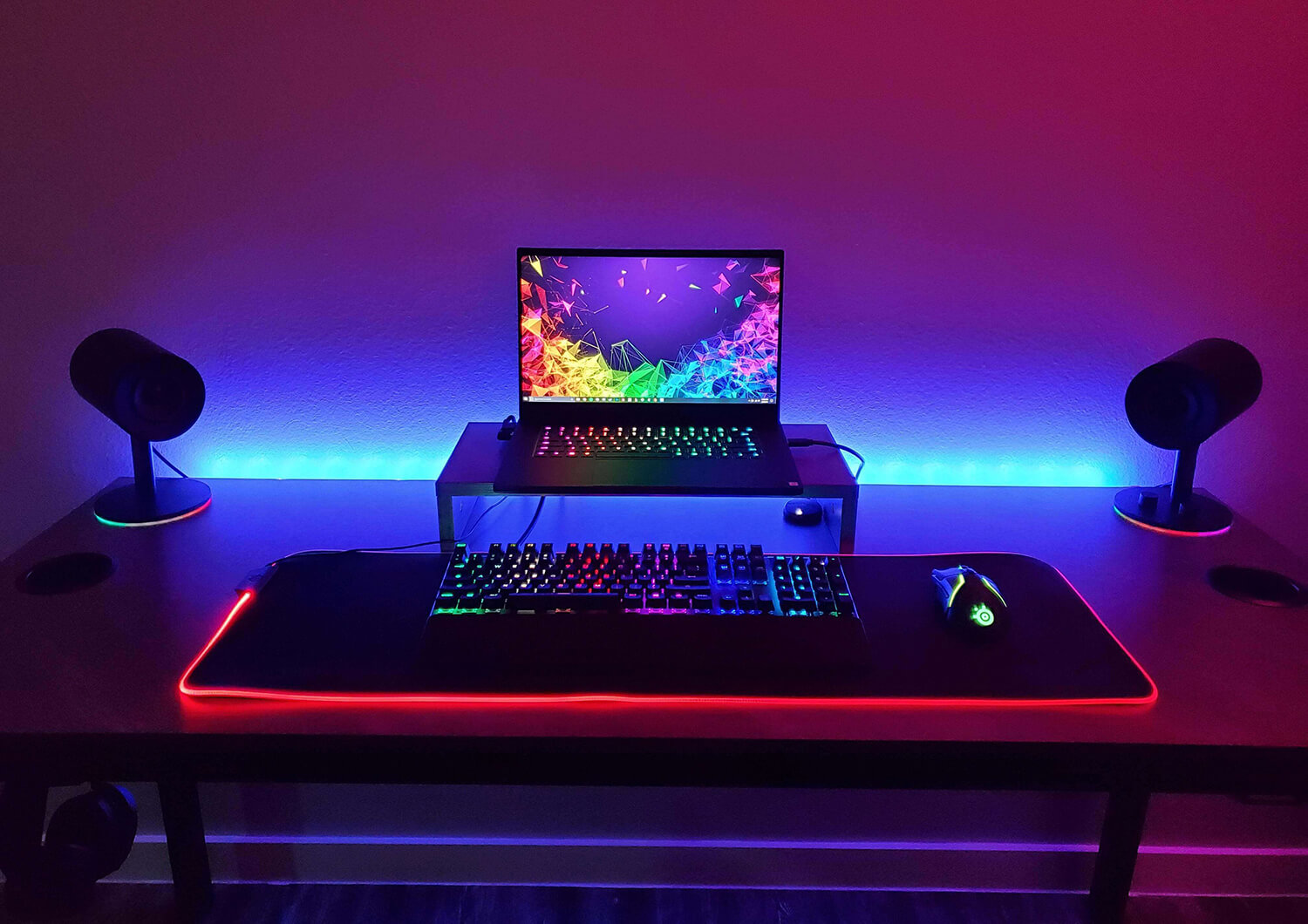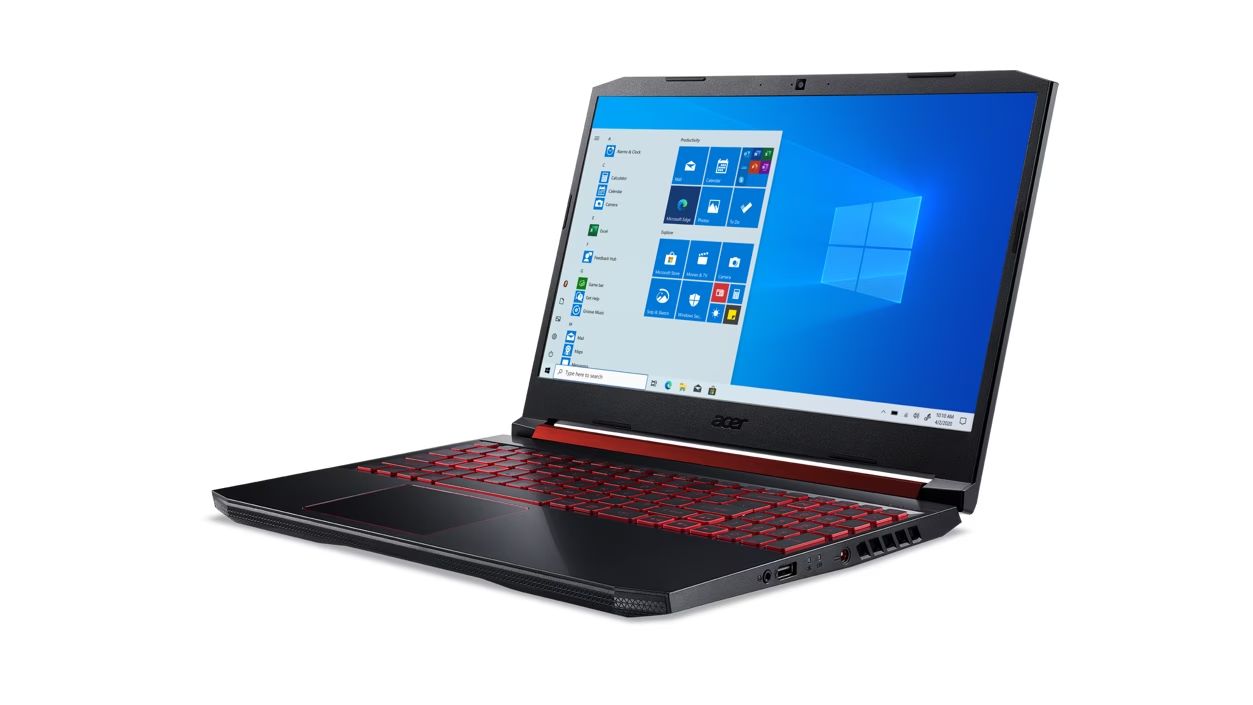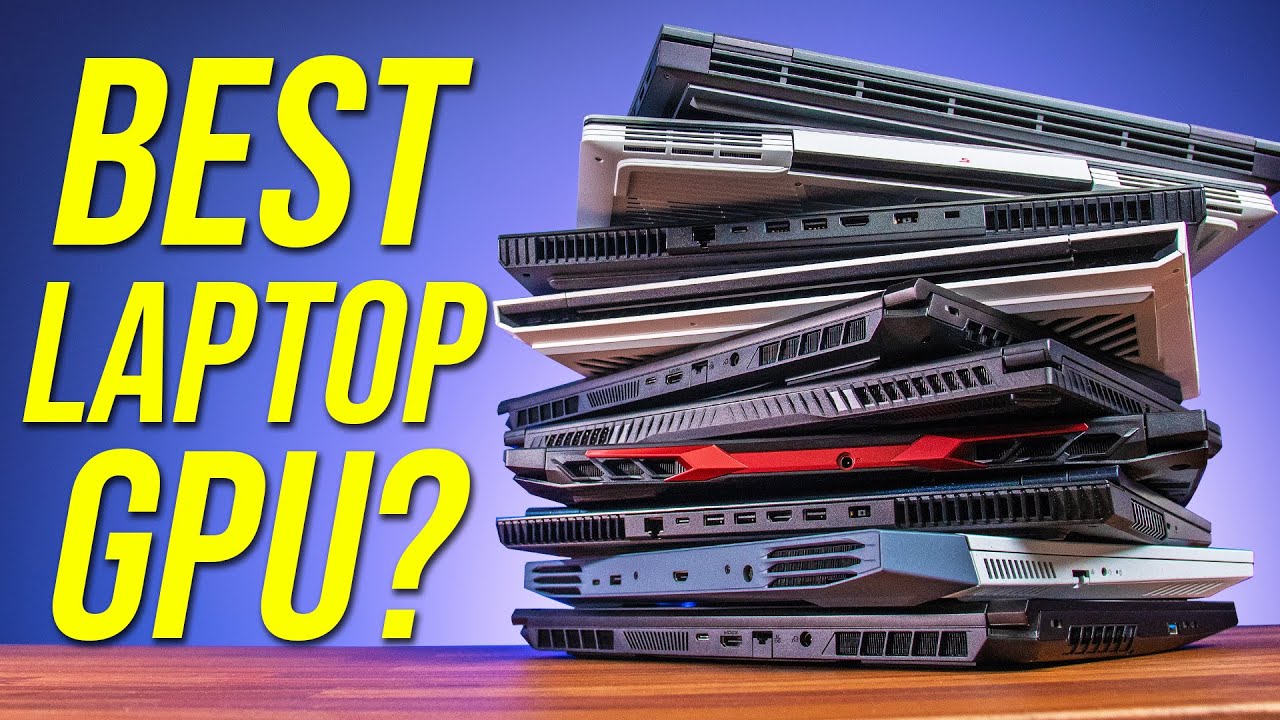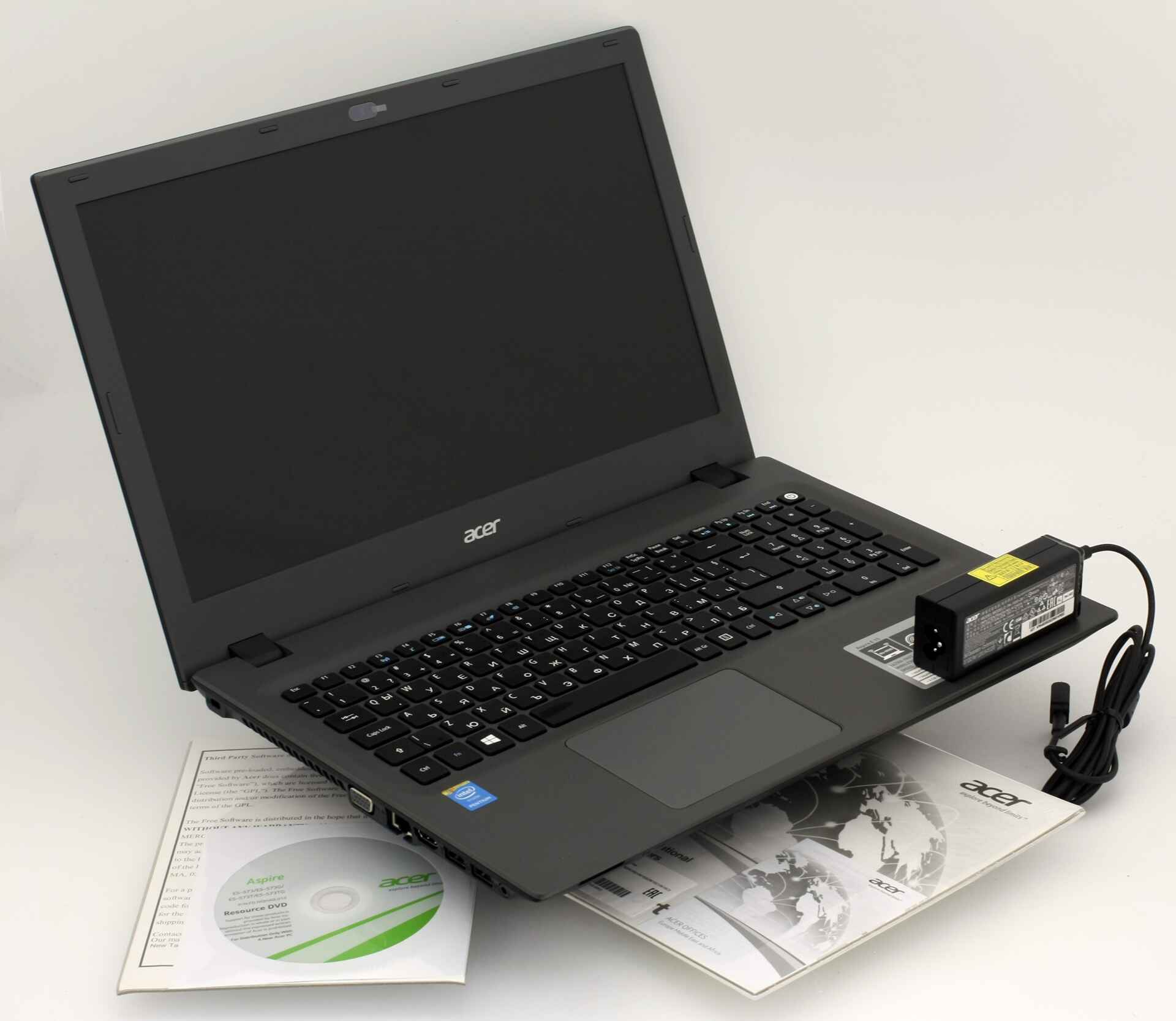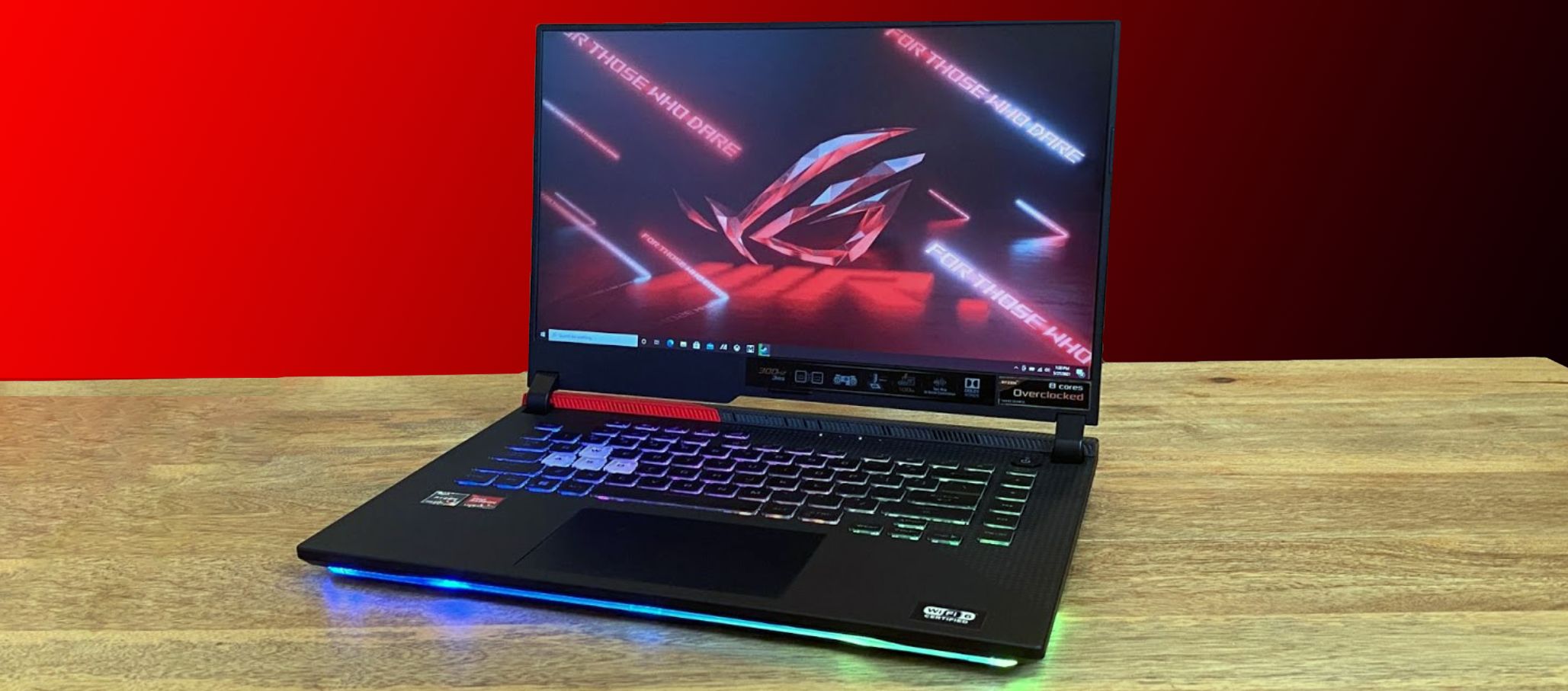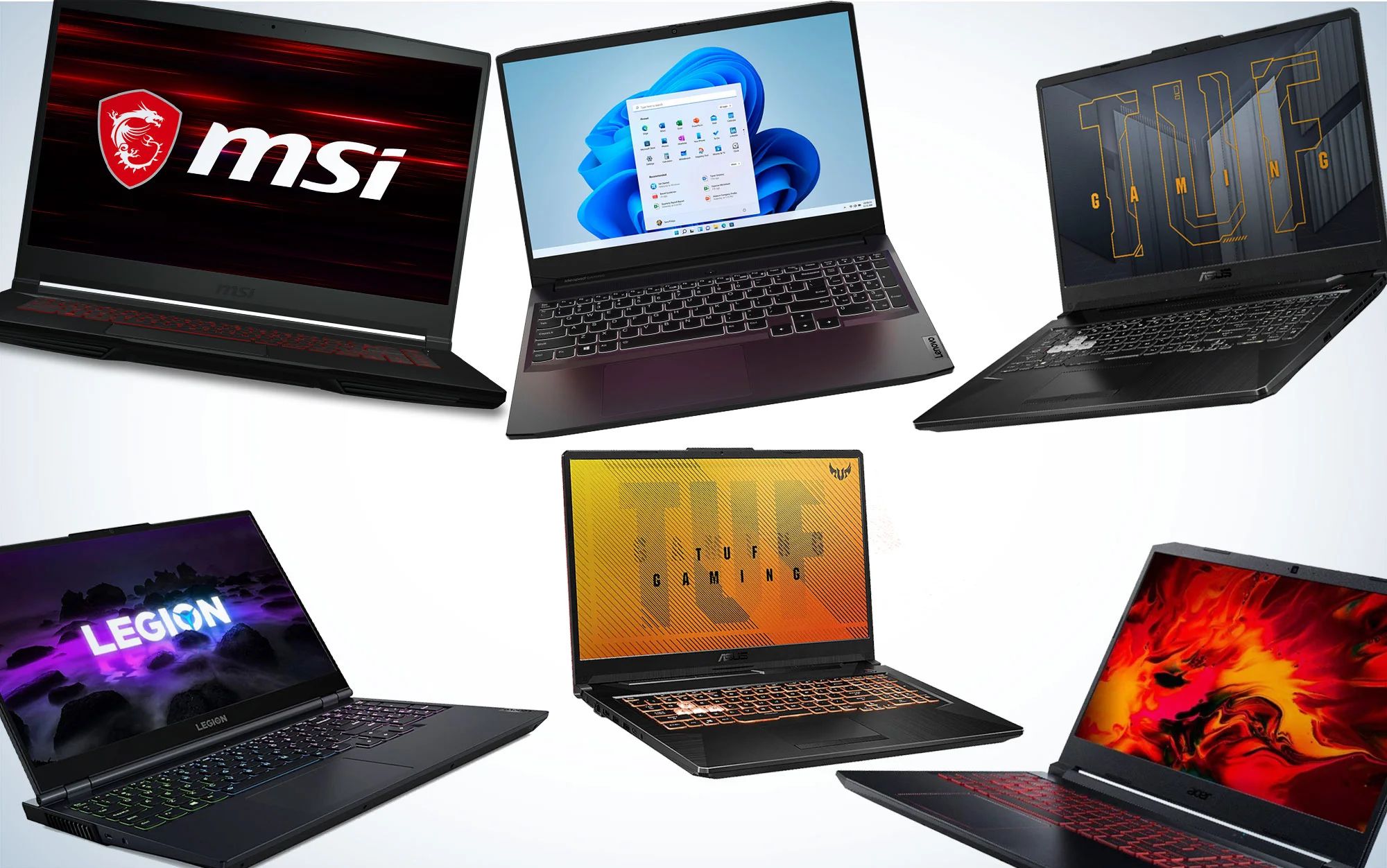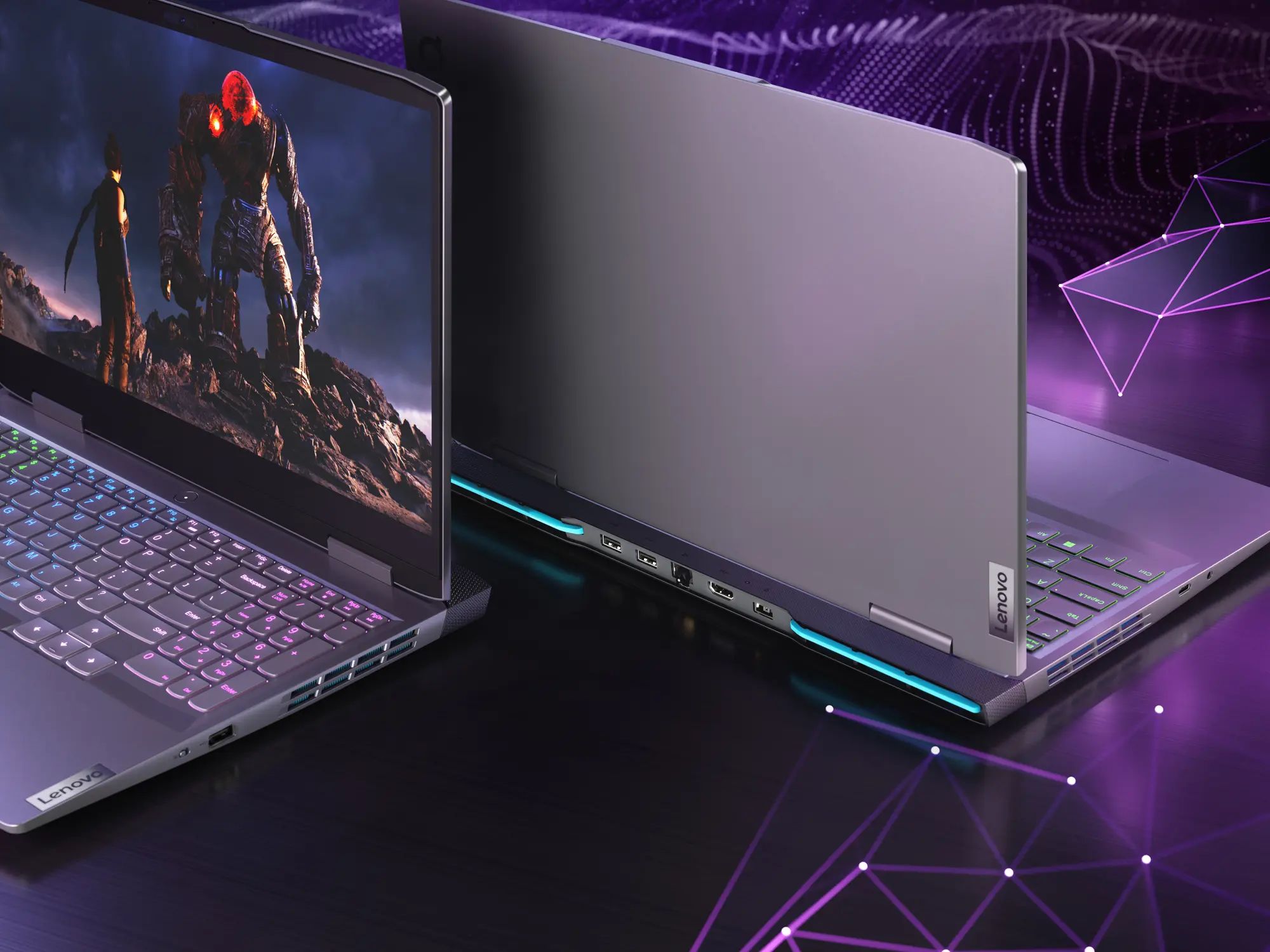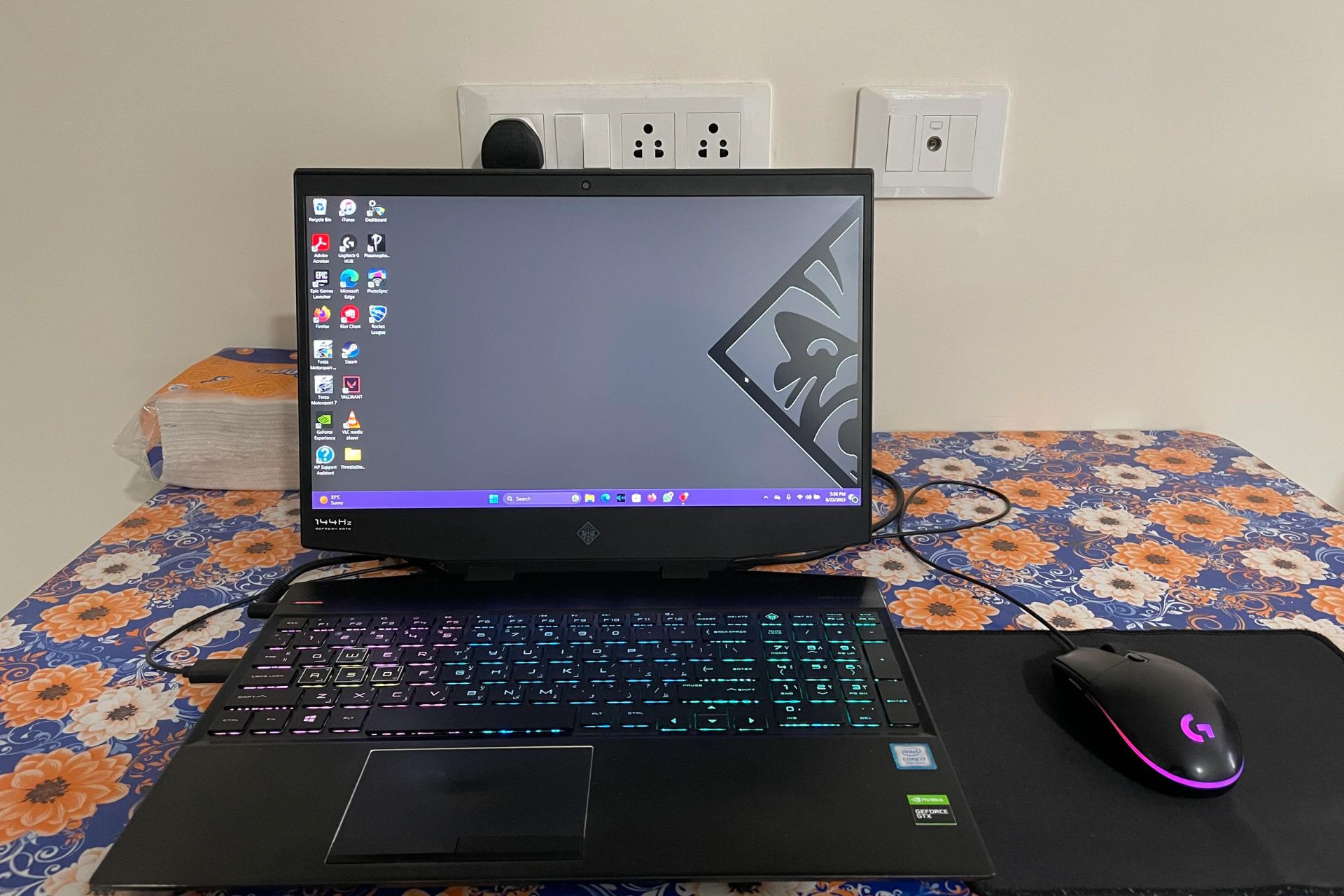Introduction
Welcome to the world of gaming laptops! Whether you’re a casual gamer or a hardcore enthusiast, having a good gaming laptop can make all the difference in your gaming experience. Gaming laptops are specifically designed to handle the graphics-intensive demands of modern games, providing you with a portable gaming solution that allows you to play your favorite titles wherever you go.
When it comes to choosing the right gaming laptop, there are a few key factors to consider. From the processor and graphics card to RAM and storage options, each component plays a vital role in delivering optimal performance. Additionally, factors such as display quality, keyboard and trackpad functionality, battery life, cooling efficiency, and connectivity options should also be taken into account.
In this guide, we will take a comprehensive look at all the important considerations when it comes to making a good gaming laptop choice. Whether you’re a tech-savvy gamer or new to the world of gaming laptops, this guide will provide you with the knowledge you need to make an informed decision.
Before we delve into the specifications and features to look for, it’s important to establish your budget. Gaming laptops come in a wide range of prices, and determining your budget will help narrow down your options and ensure that you find the best value for your money.
In the following sections, we will cover all the crucial aspects of a good gaming laptop, from the processor and graphics card to the display, keyboard, battery life, cooling system, and connectivity options. By the end of this guide, you’ll be equipped with the knowledge needed to choose a gaming laptop that fulfills your gaming requirements without breaking the bank.
Choosing the Right Processor
One of the most important components to consider when purchasing a gaming laptop is the processor. The processor, also known as the CPU (Central Processing Unit), is the brain of your laptop and handles all the calculations and processes necessary for running games smoothly.
When it comes to gaming, you’ll want to choose a laptop with a powerful processor that can handle the demands of modern games. The two main players in the processor market are Intel and AMD. Intel processors, especially those from the Core i5 and Core i7 series, are well-known for their strong single-core performance, which is important for gaming. AMD processors, on the other hand, offer great value for money and are known for their multi-threaded performance, making them a good choice for gamers who also engage in tasks that require multitasking.
In terms of specific models, look for processors with high clock speeds and multiple cores. Clock speed is measured in gigahertz (GHz) and determines how fast the processor can execute instructions. Higher clock speeds generally result in better gaming performance. Additionally, having multiple cores allows the processor to handle multiple tasks simultaneously, which is beneficial for both gaming and multitasking.
It’s worth noting that the processor you choose should be compatible with the motherboard of your gaming laptop. Most laptops come with integrated processors, meaning they are soldered directly onto the motherboard and cannot be upgraded. However, some high-end gaming laptops offer the option to upgrade the processor in the future, providing greater flexibility as your gaming needs evolve.
Lastly, don’t forget to consider the power consumption of the processor. While gaming laptops are generally known for their high-performance capabilities, they often consume more power compared to standard laptops. Choose a processor that strikes a balance between performance and power efficiency to ensure that your gaming sessions aren’t cut short due to battery drain.
In summary, when choosing the right processor for your gaming laptop, look for a model with high clock speeds, multiple cores, compatibility with the motherboard, and a balance between performance and power efficiency. By selecting a powerful and suitable processor, you’ll lay the foundation for an exceptional gaming experience on your laptop.
Selecting the Ideal Graphics Card
When it comes to gaming, the graphics card is perhaps the most crucial component in your laptop. The graphics card, also known as the GPU (Graphics Processing Unit), is responsible for rendering the visuals in games, ensuring smooth and immersive gameplay.
When selecting a graphics card for your gaming laptop, there are a few key factors to consider. Firstly, you’ll want to choose a card with sufficient VRAM (Video Random Access Memory). VRAM is dedicated memory used by the graphics card to store and process data related to rendering visuals. More VRAM allows for better graphics quality and smoother gameplay, especially in graphics-intensive games.
Another important consideration is the GPU architecture. NVIDIA and AMD are the two major players in the GPU market, with NVIDIA being more popular among gamers. Both manufacturers offer a range of graphics cards with varying levels of performance and capabilities. Look for cards from recent generations, as they often come with architectural improvements that enhance gaming performance.
Next, consider the performance level of the graphics card. Higher-end laptops may feature dedicated graphics cards, which offer superior performance compared to integrated graphics. Dedicated graphics cards come with their own dedicated VRAM and are capable of delivering smoother gameplay and better graphics quality. Integrated graphics, on the other hand, use a portion of the system’s RAM and are suitable for casual gaming or less demanding titles.
It’s important to note that the graphics card you choose should be compatible with the other components of your gaming laptop. Check the specifications of the laptop to ensure that the graphics card fits within the power and cooling requirements of the system.
Lastly, consider the power consumption and thermal management of the graphics card. High-performance graphics cards tend to consume more power and generate more heat. Ensure that your gaming laptop has adequate cooling mechanisms, such as efficient fans and heat sinks, to keep the graphics card running at optimal temperatures. Overheating can cause performance throttling and may lead to decreased gaming performance.
In summary, when selecting the ideal graphics card for your gaming laptop, consider factors such as VRAM, GPU architecture, performance level, compatibility with other components, power consumption, and thermal management. By choosing a powerful and suitable graphics card, you’ll be able to enjoy visually stunning and smooth gaming experiences on your laptop.
Optimal RAM and Storage
Aside from the processor and graphics card, the amount of RAM (Random Access Memory) and storage in your gaming laptop also play significant roles in determining its performance and overall usability.
When it comes to RAM, it is recommended to have a minimum of 8GB for gaming laptops. RAM is responsible for storing and quickly accessing the data that the processor needs to perform tasks efficiently. Having more RAM allows for smoother multitasking and better loading times in games. If you plan to run multiple applications or perform resource-intensive tasks alongside gaming, consider opting for 16GB or even 32GB of RAM.
In addition to the amount of RAM, pay attention to the RAM speed or frequency. Higher RAM speeds typically result in better performance, especially in memory-intensive tasks. However, keep in mind that the actual impact on gaming performance may vary depending on other factors, such as the processor and graphics card.
When it comes to storage, gaming laptops typically offer a combination of solid-state drives (SSDs) and hard disk drives (HDDs). SSDs provide faster read and write speeds, resulting in quicker boot times, faster game loading, and overall snappier system performance. On the other hand, HDDs offer larger storage capacities at a lower cost per gigabyte. For an optimal gaming experience, it is recommended to have an SSD as the primary drive for the operating system and frequently played games, while using an HDD for additional storage of less frequently accessed files.
Consider the storage capacity based on your gaming requirements and other storage needs. Games nowadays can easily take up tens or even hundreds of gigabytes, so having ample storage is essential. A combination of a moderately sized SSD (256GB or more) and a large-capacity HDD (1TB or more) should provide enough space for your gaming library and other files.
Lastly, consider the interface and connection options of the storage drives. Many gaming laptops now feature M.2 slots for high-speed NVMe SSDs, which can significantly improve storage performance. Additionally, having USB 3.0 or newer ports allows for faster data transfer when connecting external storage devices.
In summary, having an optimal amount of RAM and storage is essential for a smooth and enjoyable gaming experience. Aim for a minimum of 8GB of RAM (preferably with higher clock speeds) and consider a combination of SSD and HDD storage drives. By choosing the right RAM and storage configuration, you’ll be able to enjoy fast and responsive gameplay while having enough space for your games and other files.
Display Considerations for Gaming
When it comes to gaming laptops, the display is a crucial component that directly impacts your gaming experience. A high-quality display not only enhances visual immersion but also ensures that you can fully appreciate the stunning graphics and details in your favorite games.
The first consideration is the screen size. Gaming laptops typically come in sizes ranging from 14 to 17 inches. The larger the screen size, the more immersive the gaming experience, but it may also make the laptop bulkier and less portable. Find a screen size that strikes a balance between immersion and portability, keeping in mind your personal preferences.
Resolution is another important factor to consider. The higher the resolution, the sharper and more detailed the visuals will appear. Most gaming laptops offer Full HD resolution (1920 x 1080 pixels), which is suitable for most games. However, if you’re a fan of visually demanding games or prefer more screen real estate, consider opting for a laptop with a higher resolution, such as QHD (2560 x 1440 pixels) or even 4K (3840 x 2160 pixels).
Refresh rate is an essential aspect for gamers, as it determines how many frames per second (fps) the display can support. A higher refresh rate, such as 144Hz or 240Hz, results in smoother motion and reduces motion blur during fast-paced gaming. This is particularly beneficial in competitive gaming genres where quick reaction times are crucial. However, keep in mind that achieving high refresh rates may require a more powerful graphics card, so ensure that your laptop can handle the increased demand.
In addition to resolution and refresh rate, consider the display panel type. The two most common panel types are IPS (In-Plane Switching) and TN (Twisted Nematic). IPS panels offer wider viewing angles and better color accuracy, making them ideal for immersive gaming and content creation. TN panels, on the other hand, are known for their fast response times and lower input lag, making them suitable for competitive gaming. Choose a panel type based on your priorities and gaming preferences.
Lastly, consider features such as anti-glare coatings and adaptive sync technologies. Anti-glare coatings help reduce glare and reflections, enhancing visibility in brightly lit environments. Adaptive sync technologies, such as NVIDIA G-Sync and AMD FreeSync, synchronize the display’s refresh rate with the graphics card’s output, reducing stuttering and screen tearing for a smoother gaming experience.
In summary, choosing the right display for your gaming laptop involves considering factors such as screen size, resolution, refresh rate, panel type, anti-glare coatings, and adaptive sync technologies. By selecting a high-quality display that meets your gaming preferences and requirements, you’ll be able to fully immerse yourself in the captivating visuals of your favorite games.
Keyboard and Trackpad Selection
When it comes to gaming on a laptop, having a good keyboard and trackpad is essential for comfortable and precise control. Whether you’re engaging in fast-paced action games or typing out messages in online chats, having a responsive and well-designed keyboard can greatly enhance your overall gaming experience.
When selecting a gaming laptop, pay attention to the keyboard’s key travel and actuation force. Key travel refers to the distance a key can be pressed down, while actuation force is the amount of pressure required to register a keypress. Look for a keyboard with sufficient key travel and a comfortable actuation force that suits your typing and gaming preferences. Mechanical keyboards offer a tactile and satisfying typing experience, but they can add weight and bulk to the laptop.
Backlighting is another important consideration, especially for gaming in low-light conditions. Look for a laptop with customizable backlighting options, allowing you to adjust the brightness and color of the keys. This not only adds a stylish aesthetic but also improves visibility during intense gaming sessions.
In addition to the keyboard, the trackpad is also worth considering, especially if you occasionally use it for gameplay or navigation. Look for a trackpad with smooth and accurate tracking, as well as support for multi-touch gestures. While a dedicated gaming mouse is usually recommended for precision and control, having a reliable trackpad is still important for times when you’re on the go or need to make quick adjustments in-game.
If you’re serious about gaming and prefer a more immersive experience, consider a laptop that offers customizable macro keys. These additional programmable keys can be assigned to specific game functions or complex macros, allowing for quick and efficient execution of commands during gameplay.
Lastly, consider the layout and placement of the keyboard and trackpad. Ensure that the keyboard is well-positioned and that the keys are well-spaced for comfortable typing and gaming. Check if the trackpad is positioned accurately and does not interfere with your hand movements during gaming sessions.
In summary, selecting a gaming laptop with a high-quality keyboard and trackpad is crucial for comfortable and precise control during gameplay. Look for features such as sufficient key travel, appropriate actuation force, customizable backlighting, accurate trackpad tracking, support for multi-touch gestures, and optional macro keys. By choosing a laptop with a well-designed keyboard and trackpad, you’ll be able to enjoy a seamless and immersive gaming experience.
Battery Life and Power Efficiency
When it comes to gaming laptops, battery life and power efficiency are important considerations, especially for those who frequently game on the go or in locations where power outlets may not be readily available.
Gaming laptops are known for their high-performance hardware, which generally consumes more power compared to standard laptops. As a result, gaming laptops typically have shorter battery life. However, advancements in technology have allowed for improvements in power efficiency, and some gaming laptops can offer decent battery life for everyday tasks and casual gaming sessions.
When selecting a gaming laptop, consider the battery capacity and the estimated battery life provided by the manufacturer. Battery capacity is measured in watt-hours (Wh), with larger values generally indicating longer battery life. However, keep in mind that battery life can vary depending on factors such as the intensity of gaming, screen brightness, and the applications running in the background.
To maximize battery life, consider adjusting power settings and optimizing usage. Lowering the screen brightness, disabling unnecessary background applications, and using power-saving modes can help extend battery life during gaming sessions. Additionally, some gaming laptops offer features such as hybrid graphics, where you can switch between dedicated and integrated graphics depending on power requirements, further improving battery efficiency.
It’s important to note that gaming laptops are primarily designed to deliver high-performance gaming experiences while plugged in. For extended gaming sessions, it is recommended to have the laptop connected to a power outlet to ensure optimal performance without draining the battery. Carrying a power adapter and planning for access to power outlets is essential for uninterrupted gaming sessions, especially during travel.
Depending on your usage patterns, you may also consider investing in a laptop cooling pad or external cooling solutions. These accessories can help dissipate heat more effectively, allowing the laptop’s components to operate at lower temperatures. Lower temperatures result in better performance and can also contribute to improved power efficiency.
In summary, gaming laptops typically have shorter battery life compared to standard laptops due to their high-performance hardware. Consider the battery capacity, estimated battery life, and power-saving optimizations to maximize battery efficiency. Keep in mind that gaming laptops are best enjoyed while connected to a power source, and carrying a power adapter is essential for uninterrupted gaming. Additionally, external cooling solutions can contribute to improved power efficiency and overall performance.
Cooling and Heat Management
In the world of gaming laptops, cooling and heat management are crucial factors that can significantly impact performance, longevity, and user experience. The high-performance hardware and intense graphics rendering of modern games generate a considerable amount of heat, and it’s important to have an effective cooling system in place to keep temperatures in check.
When selecting a gaming laptop, pay attention to the cooling mechanisms it employs. Look for laptops with efficient cooling systems that incorporate features such as heat pipes, heat sinks, and multiple fans. These components work together to dissipate heat away from critical areas and maintain optimal operating temperatures for the processor, graphics card, and other internal components.
Ensure that the laptop has sufficient airflow with well-placed vents and intake/exhaust points. Adequate ventilation allows for the intake of cool air and the expulsion of hot air, preventing the buildup of heat within the laptop’s chassis. Avoid covering the vents or placing the laptop on surfaces that restrict airflow, such as pillows or blankets.
Consider laptops that utilize thermal management software or firmware that enables dynamic fan control and temperature monitoring. These features can adjust fan speed and performance based on real-time temperature readings, optimizing cooling efficiency while reducing unnecessary noise.
In addition to the laptop’s cooling system, consider external cooling solutions to further enhance heat management. Laptop cooling pads or stands with built-in fans can provide additional airflow and help dissipate heat more effectively. These accessories can be particularly useful during extended gaming sessions or in hotter environments.
Keeping your gaming laptop clean is also crucial for efficient heat management. Over time, dust and debris can accumulate within the laptop’s cooling system, obstructing airflow and causing components to overheat. Regularly cleaning the vents and fans can help maintain optimal cooling performance, reducing the risk of thermal throttling and potential damage to internal components.
Finally, it’s essential to strike a balance between performance and heat management. Pushing the laptop to its limits for extended periods can lead to higher temperatures and increased strain on the cooling system. Consider optimizing in-game graphics settings and using frame rate limiters to reduce the workload on the hardware, resulting in lower temperatures and improved overall performance.
In summary, cooling and heat management are vital aspects to consider when purchasing a gaming laptop. Look for laptops with efficient cooling systems, good airflow, and thermal management features. Consider external cooling solutions to supplement the laptop’s cooling capabilities. Regularly clean the laptop to prevent dust buildup, and optimize in-game settings to reduce strain on the hardware. By prioritizing effective cooling and heat management, you’ll ensure optimal performance and longevity of your gaming laptop.
Connectivity and Ports
Connectivity and ports are important considerations when choosing a gaming laptop, as they determine how you can connect and interact with various devices and peripherals. Having a wide range of connectivity options allows for versatility and ensures that you can easily connect external devices and accessories.
First and foremost, consider the availability and types of USB ports. USB ports are essential for connecting peripherals such as gaming mice, keyboards, controllers, external hard drives, and other accessories. Look for laptops with multiple USB ports, preferably with USB 3.0 or newer standards for faster data transfer speeds. USB-C ports, which support Thunderbolt 3 technology, are also desirable for their increased versatility and compatibility with a wide range of devices.
Additionally, check for an HDMI or DisplayPort output. These video ports allow you to connect your gaming laptop to external monitors or displays for a larger and more immersive gaming experience. HDMI is more common and suitable for most displays, while DisplayPort provides higher refresh rates and resolution support.
Another important consideration is the availability of an Ethernet port. While most gaming is done over Wi-Fi, having an Ethernet port can provide faster and more stable internet connectivity, which is beneficial for online multiplayer gaming where a stable connection is crucial. Look for laptops with Gigabit Ethernet ports for optimal network performance.
Audio connectivity is also worth considering. Look for laptops with a dedicated headphone jack for connecting gaming headsets or external speakers. Some laptops may also have separate microphone jacks or support for audio input/output through the USB-C or Thunderbolt ports.
Consider additional connectivity options such as an SD card reader, which allows for easy transfer of photos and files from cameras and other devices. Some gaming laptops may also offer other ports such as VGA, mini DisplayPort, or proprietary docking connectors, which can be useful if you have specific devices or peripherals that require these connections.
Wireless connectivity is essential for modern gaming laptops. Look for laptops with built-in Wi-Fi capabilities that support the latest standards, such as Wi-Fi 6 (802.11ax) or Wi-Fi 5 (802.11ac), for fast and reliable wireless internet connectivity. Bluetooth support is also valuable for connecting wireless peripherals such as controllers and headphones.
Consider the location and layout of the ports on the laptop. Ensure that they are conveniently placed and easily accessible, especially if you plan to use multiple peripherals simultaneously. Additionally, check for any optional features such as Thunderbolt 3, which provides high-speed data transfer and expanded connectivity options with compatible devices.
In summary, connectivity and ports are crucial aspects to consider when choosing a gaming laptop. Look for laptops with a variety of USB ports, HDMI or DisplayPort outputs for external displays, an Ethernet port for stable internet connectivity, audio jacks, and other useful ports such as SD card readers. Consider the availability of Wi-Fi and Bluetooth for wireless connectivity. By ensuring a wide range of connectivity options, you’ll be able to connect and interact with various devices and peripherals seamlessly.
Estimating the Budget
When it comes to purchasing a gaming laptop, one of the most important considerations is your budget. Gaming laptops come in a wide range of prices, and determining your budget allows you to narrow down your options and find the best value for your money.
Before setting a budget, consider your gaming needs and expectations. Are you a casual gamer who enjoys less demanding games, or are you a hardcore enthusiast who wants to play the latest AAA titles at maximum settings? Understanding your gaming requirements will help you determine the level of performance you need from a gaming laptop.
As a general guideline, entry-level gaming laptops typically range from $700 to $1,000. These laptops offer decent performance for casual gamers and are suitable for playing less demanding games and older titles. If you’re on a tight budget or enjoy lighter gaming experiences, these laptops can provide a good balance between performance and affordability.
Mid-range gaming laptops usually fall in the $1,000 to $1,500 price range. These laptops offer more powerful processors, higher-capacity RAM, and dedicated graphics cards, allowing for smoother gameplay and better graphics quality. Mid-range laptops often strike a good balance between performance and price, making them suitable for most gamers who want a reliable and capable gaming machine.
For gamers who demand top-of-the-line performance and want the absolute best graphics and processing power, high-end gaming laptops are available in the $1,500 to $3,000+ price range. These laptops feature the latest processors, high-end graphics cards, ample RAM, and other premium components. High-end gaming laptops excel at running demanding games at the highest settings and provide an immersive gaming experience.
When estimating your budget, also consider any additional expenses you may have. This could include accessories such as a gaming mouse, headset, cooling pad, or external storage. Additionally, if you plan to travel with your gaming laptop, factor in any costs associated with carrying cases or backpacks specifically designed for gaming laptops.
Remember that while budget is important, it’s also essential to prioritize the specific hardware and features that matter most to you. For example, if you’re primarily interested in graphics quality, it may be worth allocating a larger portion of your budget towards a more powerful graphics card rather than investing in excessive RAM or storage capacity.
In summary, estimating your budget is a crucial step in the process of purchasing a gaming laptop. Consider your gaming needs and expectations to determine the level of performance you require. Research the different price ranges and prioritize the specific hardware and features that matter most to you. By setting a budget and identifying your gaming priorities, you’ll be able to find a gaming laptop that offers the best value and meets your gaming needs within your financial means.







